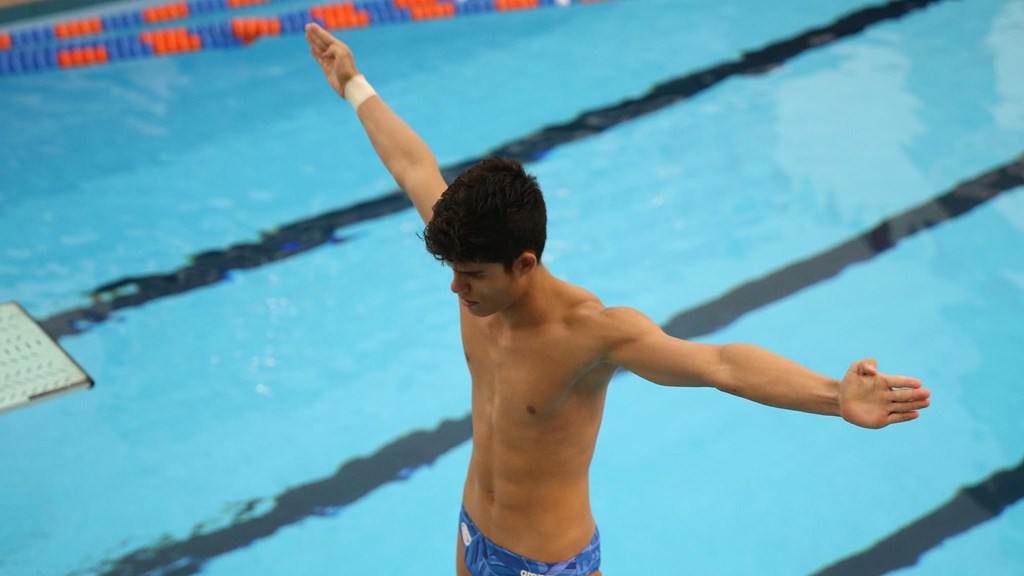Though we’re not DiveDove, we do dabble in diving coverage, and as diving can have a major impact on the NCAA Swimming & Diving Championships, we cover NCAA Zone Diving – mainly through the lens of how national diving qualifiers could impact the team points battles later this month.
2022 NCAA ZONE DIVING
- Zone A: US Naval Academy / Annapolis, Md.
- Monday, March 7 – Wednesday, March 9
- Live Results
- Zone B: Georgia Tech Aquatic Center / Atlanta, Ga.
- Sunday, March 6 – Wednesday, March 9
- Live Results
- Zone C: Canham Natatorium / Ann Arbor, Mich.
- Monday, March 7 – Wednesday, March 9
- Live Results
- Zone D: Soderholm Aquatic Center / Madison, Wisc.
- Monday, March 7 – Wednesday, March 9
- Live Results
- Zone E: Wall Aquatic Center / Flagstaff, Ariz.
- Monday, March 7 – Wednesday, March 9
- Live Results
MEN’S 1-METER
UNC’s Anton Down-Jenkins led the way and the University of Florida got one diver qualified for NCAAs on the second day of action at the Zone B Championships in Atlanta.
Down Jenkins put up a score of 742.85 to easily pace the field in the men’s 1-meter event, with Tennessee’s Bryden Hattie (711.00) edging out Miami’s Maxwell Flory (709.85) for second.
A total of eight qualifying spots were up for grabs in this event, with Tennessee and Alabama both getting two men confirmed for NCAAs while top-three team challenger Florida got one in the form of Leonardo Garcia.
Women’s 3-Meter
With 10 qualifying spots on the line, all but two of the divers who finished in the top-10 on women’s 3-meter had already qualified in Sunday’s 1-meter, with Tennessee’s Grace Cable and Florida’s Carina Lumia earning NCAA berths by placing ninth and 10th.
South Carolina’s Brooke Schultz came out on top in the event, scoring 752.70 to lead Miami’s Mia Vallee and UNC’s Aranza Vazquez Montano.
QUALIFIERS LIST
Reimbursed divers are in bold, with invited-but-not-reimbursed divers in non-bold. You can read more about the distinction below.
Women |
|
| Diver | Event(s) |
| Aranza Vazquez Montano, UNC | 1m, 3m |
| Mia Vallee, Miami | 1m, 3m |
| Brooke Schultz, South Carolina | 1m, 3m |
| Emma Gullstrand, Miami (FL) | 1m, 3m |
| Margo O’Meara, Duke | 1m, 3m |
| Maddison Pullinger, Duke | 1m, 3m |
| Meghan Wenzel, Georgia | 1m |
| Camryn Hidalgo, Georgia Tech | 1m, 3m |
| Maha Amer, Florida | 1m, 3m |
| Maha Gouda, FIU | 1m |
| Grace Cable, Tennessee | 3m |
| Carina Lumia, Florida | 3m |
Men |
|
| Anton Down-Jenkins, UNC | 1m |
| Bryden Hattie, Tennessee | 1m |
| Maxwell Flory, Miami (FL) | 1m |
| Mohamed Farouk, Alabama | 1m |
| Zhenwei Li, Alabama | 1m |
| Matthew Wade, Tennessee | 1m |
| Conner Pruitt, Auburn | 1m |
| Leonardo Garcia, Florida | 1m |
SIMPLIFIED INVITE PROCEDURES
You can read a more in-depth look at the selection process here.
Effectively, each zone earns a specific number of qualifying spots in each event, based on how that Zone performed at NCAAs last year. Divers who place inside the qualifying places earn an NCAA invite. A diver invited in one event can compete at NCAAs in any other diving event where they were top 12 in their Zone meet.
The highest-placing divers earn NCAA reimbursement, while lower-placing qualifiers can compete at NCAAs, but their school must pay for their travel and lodging at the meet.



Does not-reimbursed divers count towards the total number of divers invited, or do they count like a relay only swimmer does?
They count towards the total, the only real difference between the two is that those not reimbursed have to have their school pay for them instead of the NCAA.